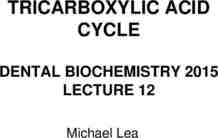Voluntary carbon market governance post-2020 Brad Schallert
10 Slides1.75 MB
Voluntary carbon market governance post-2020 Brad Schallert Director, Carbon Market Governance and Aviation WWF-US 1
Underlying questions on voluntary carbon markets When to buy carbon credits? How to account for and report carbon credits? What to say about carbon credit purchases? What to buy? 2
What makes a high-quality carbon credit? Carbon Credit Guidance for Buyers project 3
Carbon credit markets are experiencing explosive growth in quantity Issuance from independent crediting programs has increased more than 4-fold since 2016 and experts expect breakneck growth to continue into the medium- and longterm Carbon credit issuances under the 2 largest voluntary standards (VCS and Gold Standard), MtCO2e 4.5x c.125 CAGR: 21% 29 28 53 67 44b Carbon allowances market (2018) For 1. 2019 data is based on 11 months of actuals and an indicative estimate for December 2019 comparison Source: Forest Trends Ecosystem Marketplace carbon credit reports; Verra; Gold Standard; S&P Global Platts; Financial Times; BCG analysis 2015 2016 2017 200b 2018 2019E1 0.6b Carbon credit market (2019) Carbon credit market (2050) 4
However, lack of a clear benchmark for "high-quality" carbon credits No clarity over what a "good" carbon credit buying strategy is No clear path for navigating a complex carbon credit landscape No independent source assessing credit quality (see next slide) No transparency about carbon credit buying practices No market certainty on where to direct most impactful carbon financing, low quality units remain in-demand Responsible buyers lack understanding of the market making them susceptible to reputational risks Buyers have no simple means to disclose carbon credit purchases and demonstrate impact Irrespective of buyers' intent, industry accused of greenwashing as difficult to differentiate between credits' integrity Uncertainty about "double claiming" linked to Paris Agreement negotiations Public transparency is lacking despite increasing expectations (e.g. around nonfinancial disclosures) 5
Backup Many carbon credits on the market are questionable, with no real, measurable, and additional emissions reductions According to a 2016 study conducted by OekoInstitut Clean Development Mechanism (CDM) is one major source of carbon credits 73% CERs (CDM credits) highly unlikely to be additional and likely overestimated 7% Potential CER supply highly likely to be additional and not overestimated Our analysis suggests that the CDM still has fundamental flaws in terms of overall environmental integrity Source: "How additional is the Clean Development Mechanism?", Oeko-Institut, 2016 6
WWF-US & EDF are working on a solution Clear guidance to carbon credit buyers supported by authoritative, easy-to-use ratings Lead organizations Research partner Support for Phase 2 Phase 1: Detailed criteria for assessing carbon credit quality, validated with stakeholder consultation In progress Phase 2: Robust methodology for applying criteria Phase 3: Ratings application to various project types Phase 4: Publication of a report (incl. criteria, methodology and ratings) with endorsements from major stakeholders, including guidance on: o When to consider a carbon credit purchase and how to purchase responsibly o How to navigate carbon credit landscape 7
Phase 1: What makes a highquality carbon credit? Available now at: https://www.worldwildlife.or g/publications/what-makes-a -high-quality-carbon-credit 8
Carbon Credit Guidance for Buyers (CCG4B) will provide comprehensive, clear, and independent guidance relevant to stakeholders across all sectors Exhaustive and easy-to-use report 1. An introduction to carbon credits 2. The role of carbon credits in a responsible mitigation strategy 3. A discussion of the possible types of claims that may be made after purchasing carbon credits 4. An explanation of the criteria/methodology 5. Guidance on how to interpret the results 6. A visual presentation of the findings 7. Additional due diligence steps that may be applied to assess the quality of specific carbon credits 8. The full methodology and set of assumptions in an appendix to provide crucial guidance to many audiences Help buyers identify quality carbon credit projects to protect their reputation and leverage brand benefits Signal to carbon crediting entities and project developers how their activities/procedures might need to change to adjust to a new level of environmental integrity Help civil society, NGOs, and other interested entities assess offsetting claims of buyers Provide guidance to policy makers (e.g. governments on the ICAO Council) on determining project quality and how to future-9 proof projects
Thank you! Please contact Brad Schallert with further questions [email protected] 10















